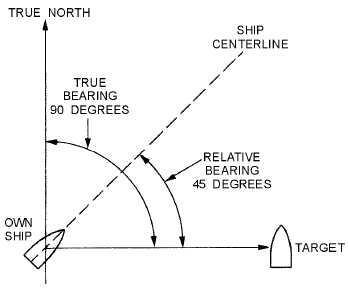1-11
The number of strikes per antenna revolution is referred to as HITS PER SCAN. During each revolution
enough pulses must be transmitted to return a usable echo.
NOTE: The more pulses transmitted to a given area (at slower antenna speeds), the greater the
number of hits per scan.
As an example, if the antenna rotates at 20 rpm, it completes a revolution in 3 seconds. During this
time, a transmitter with a prf of 200 pulses per second (pps) transmits 600 pulses. Since 360 degrees of
azimuth must be covered, the following formula shows the number of pulses for each degree of azimuth:
Such a low number of pulses for any given target area greatly increases the likelihood that some
targets will be missed entirely; therefore, prf and antenna speed must be matched for maximum
efficiency.
Q6. Atmospheric interference with the travel of electromagnetic energy increases with what rf energy
characteristic?
Q7. How is prt related to prf?
Q8. What type of radar transmitter power is measured over a period of time?
Q9. What term is used to describe the product of pulse width and pulse-repetition frequency?
BEARING
The TRUE BEARING (referenced to true north) of a radar target is the angle between true north and
a line pointed directly at the target. This angle is measured in the horizontal plane and in a clockwise
direction from true north. The bearing angle to the radar target may also be measured in a clockwise
direction from the centerline of your own ship or aircraft and is referred to as the RELATIVE BEARING.
Both true and relative bearing angles are illustrated in figure 1-8.
Figure 1-8.—True and relative bearings.



